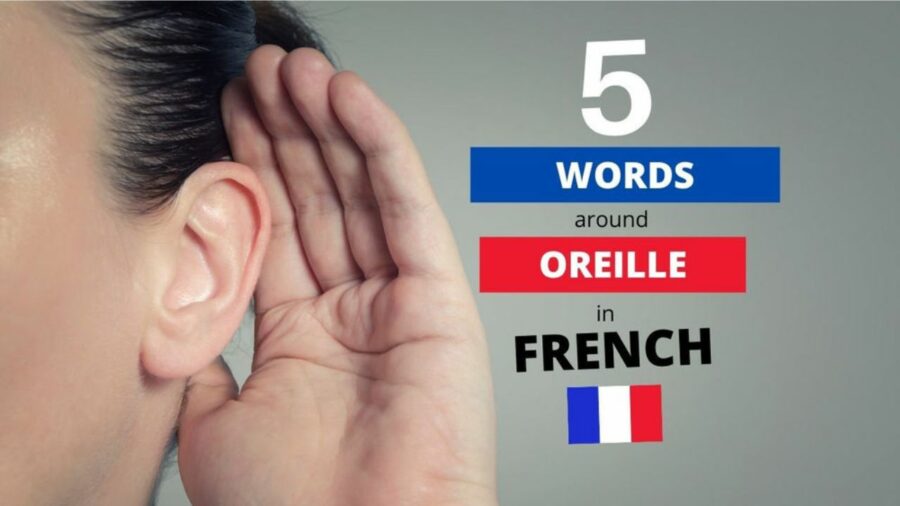
Menu
Close
French story about Le système médical, for beginners/intermediates comes from my second YouTube channel French chit-chat with Dylane. You can find the story in English and French. Watch the video to work on your listening skills, you can even turn on the subtitles in French or in English.

La semaine dernière on a parlé de ma journée aux urgences ici au Canada. C’était ma première expérience avec les urgences et les hôpitaux ici au Canada en général. Je suis allée chez le docteur quelques fois mais pour ce qui est des urgences, c’était la première fois.
Comme j’ai dit dans la vidéo précédente, j’étais assez impressionnée par la qualité des urgences. Beaucoup de gens se plaignent de devoir attendre mais je n’ai pas trouvé que c’était une attente excessive. Quand j’étais au scanner, il y avait un autre couple avec moi qui se plaignait qu’ils étaient là depuis sept ou huit heures. Mais, après sept ou huit heures, ils ont eu accès à un scanner sans devoir payer ou prouver qu’ils pouvaient payer. Ici au Canada, on a une “service card”, une carte de santé, avec laquelle on peut accéder à des soins médicaux chez un docteur, un spécialiste ou aux urgences.
Bien sûr tous les hôpitaux ne sont pas les mêmes et tous les soins ne sont pas les mêmes. Je dirais que les urgences de la Belgique, de la France et du Luxembourg sont similaires à celles du Canada.
Si on regarde le système de santé des États-Unis qui est majoritairement organisé par des assurances privées, ce n’est pas la même chose. SI on n’a pas d’assurance, une visite aux urgences peut aller jusqu’à 3000 dollars. Le prix des médicaments est aussi incroyablement cher là-bas. Si on regarde juste à l’insuline pour traiter le diabète. Il y a quelques années les Américains devaient payer aux alentours de 300 dollars pour de l’insuline, quand le même flacon coûtait 17,50 euros en France.
Pour ce qui est de l’Europe, j’ai grandi en Belgique et j’ai passé la plus grande partie de ma carrière au Luxembourg. J’ai donc eu la chance d’avoir accès aux deux systèmes médicaux. Ils sont assez similaires mais le Luxembourg est un pays plus riche donc les soins médicaux sont aussi de meilleure qualité en général. Tous les soins sont couverts par la sécurité sociale, qui est couvert par les taxes et par l’État. Le Luxembourg a un secteur médical privé mais personnellement je ne l’ai jamais utilisé.
En Belgique, en plus de ce que l’État prend en compte, j’avais une assurance, appelée une mutuelle, qui me coûtait une dizaine d’euros par mois. J’avais aussi l’assurance santé luxembourgeoise vu que je travaillais là-bas.
Pour vous donner une idée générale, j’ai dû être opérée quand j’avais 22 ans, une anesthésie générale en hôpital de jour. L’hôpital de jour c’est quand on rentre le matin à l’hôpital et qu’on sort le soir, juste une journée. Cela m’a coûté 3 euros, parce que je pense qu’une des injections n’était pas couverte par mes deux assurances médicales.
J’ai aussi passé une semaine à l’hôpital quand j’avais 11 ans et cela n’a rien coûté à ma famille.
Ce qui manque ici au Canada ce sont des docteurs de famille. En Belgique, j’ai toujours mon docteur et je peux aller consulter quand je rentre, même si je ne vis plus en Belgique. Ici, pour avoir un docteur de famille, on est d’abord sur une liste d’attente pendant des années avant d’avoir finalement un docteur. En espérant qu’il ou elle ne prenne pas sa retraite.
Alors dites-moi, comment sont les soins de santé dans votre pays ? Est-ce que c’est gratuit ou est-ce que vous devez payer ?
Last week, we talked about my visit to the emergency room here in Canada. It was my first experience with the emergency room and hospitals in general here in Canada. I have been to the doctor a few times, but when it comes to emergencies, it was the first time.
As I mentioned in the previous video, I was quite impressed with the quality of the emergency room. Many people complain about waiting, but I didn’t find it to be an excessive wait. When I was getting a scan, another couple with me complained that they had been waiting for seven or eight hours. However, after seven or eight hours, they had access to a scan without having to pay or prove they could pay. Here in Canada, we have a “service card,” a health card, which allows us to access medical care from a doctor, specialist, or emergency room.
Of course, not all hospitals are the same, and not all care is the same. I would say that the emergency rooms in Belgium, France, and Luxembourg are similar to those in Canada.
If we look at the healthcare system in the United States, which is mainly organized by private insurance, it’s not the same. If you don’t have insurance, a visit to the emergency room can cost up to $3,000. The price of drugs is also incredibly expensive there. If we just look at insulin to treat diabetes, a few years ago, Americans had to pay around $300 for insulin, while the same vial cost €17.50 in France.
As for Europe, I grew up in Belgium and spent most of my career in Luxembourg. So I was lucky to have access to both medical systems. They are quite similar, but Luxembourg is a richer country, so medical care is generally of better quality. All care is covered by social security, which is covered by taxes and the state. Luxembourg has a private medical sector, but I have never personally used it.
In Belgium, in addition to what the state covers, I had insurance, called a mutuelle, which cost me about ten euros per month. I also had Luxembourgish health insurance because I worked there.
To give you a general idea, I had to undergo surgery when I was 22 years old, a general anesthesia in a day hospital. Day hospital is when you go to the hospital in the morning and leave in the evening, just one day. It cost me 3 euros because I think one of the injections was not covered by my two medical insurances.
I also spent a week in the hospital when I was 11 years old, and it didn’t cost my family anything.
What is missing here in Canada are family doctors. In Belgium, I still have my doctor and can go for a consultation when I return, even if I no longer live in Belgium. Here, to have a family doctor, you are first on a waiting list for years before finally getting a doctor. Hoping that he or she doesn’t retire.
So, tell me, how is healthcare in your country? Is it free, or do you have to pay?
Check out my French Listening Practice Workshop to improve your French speaking skills.
